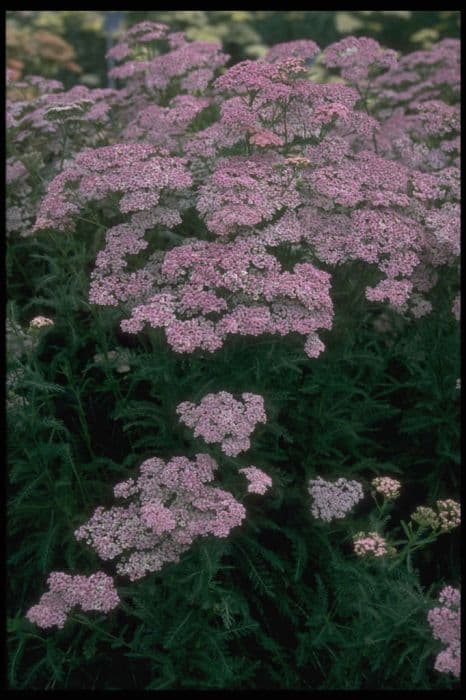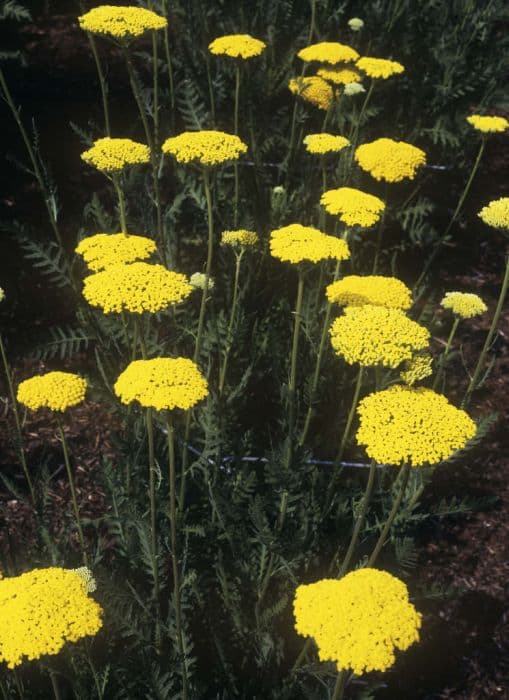Stokes' aster 'Purple Parasols' Stokesia laevis 'Purple Parasols'

ABOUT
'Purple Parasols' is a compact herbaceous perennial, up to 45cm high, with evergreen rosettes of slender green leaves and large deep violet cornflower-like flowers with paler centres from midsummer to early autumn
About this plant
 Names
NamesFamily
Asteraceae.
Synonyms
Stokes' Aster, Stokes Aster, Purple Parasols.
Common names
Stokesia laevis.
 Characteristics
CharacteristicsLife cycle
Perennials
Foliage type
Evergreen
Color of leaves
Green
Flower color
Purple
Height
1-2 feet (30-60 cm)
Spread
1-2 feet (30-60 cm)
Plant type
Herb
Hardiness zones
5
Native area
Southeastern United States
Benefits
 General Benefits
General Benefits- Attracts Pollinators: Stokesia laevis 'Purple Parasols', commonly known as Stokes' aster, is known to attract butterflies and other beneficial insects, promoting pollination in the garden.
- Landscape Aesthetics: With its striking purple flowers, Stokes' aster provides vibrant color and texture to garden beds, borders, and container plantings.
- Drought Tolerance: Once established, it has good drought resistance, making it suitable for xeriscaping and low-water use gardens.
- Easy to Grow: Stokes' aster is considered easy to cultivate and can thrive in a variety of soil types, although it prefers well-drained soil.
- Long Blooming Period: It has a lengthy flowering season, typically from early summer to early fall, providing lasting color in the garden.
- Cold Hardy: It is winter hardy in many regions, which allows it to be used in a variety of climate zones without requiring extensive protection.
- Low Maintenance: Stokes' aster requires minimal upkeep beyond occasional watering and deadheading to encourage further blooming.
- Deer Resistance: This plant is known to be resistant to browsing by deer, making it an excellent choice for gardens in areas with a deer population.
- Compact Growth: Its compact growth habit makes it ideal for small spaces and can help prevent over-crowding in garden designs.
- Propagation: Stokes' aster can be easily propagated from division or seeds, allowing gardeners to expand their plantings without additional costs.
 Medical Properties
Medical PropertiesThis plant is not used for medical purposes.
 Air-purifying Qualities
Air-purifying QualitiesThis plant is not specifically known for air purifying qualities.
 Other Uses
Other Uses- Photography Prop: Stokesia laevis 'Purple Parasols' can provide an attractive backdrop or focal point for garden photography due to its vibrant purple blooms.
- Educational Tool: The plant can be used in educational settings like schools or botanical gardens to teach about pollination and the role of native plants in local ecosystems.
- Artistic Inspiration: Artists may use Stokesia as a subject in painting or drawing to capture its unique form and color.
- Theme Gardens: 'Purple Parasols' fits well into themed garden designs, such as butterfly gardens or purple color-themed gardens.
- Special Events Decoration: Clusters of these flowers can be used to adorn tables or venues for events such as garden parties or weddings.
- Craft Projects: Dried blooms of Stokesia can be used in floral craft projects, such as making homemade potpourri or decorative wreaths.
- Wildlife Shelter: The dense foliage and growth habit can provide shelter for small wildlife within a garden setting.
- Culinary Garnish: While not widely known for edible uses, the petals could be used as a colorful garnish for salads or desserts in small quantities.
- Textile Dyeing: The pigments of the petals might be explored for natural dyeing processes, although this is an unconventional use.
- Photographic Color Reference: The consistent color of the 'Purple Parasols' petals might be used as a reference point for color balance in photography post-processing.
Interesting Facts
 Feng Shui
Feng ShuiStokes’ aster is not used in Feng Shui practice.
 Zodiac Sign Compitability
Zodiac Sign CompitabilityStokes’ aster is not used in astrology practice.
 Plant Symbolism
Plant Symbolism- Charm: The Stokes' Aster has an alluring beauty, often symbolizing a captivating and charming nature due to its unique and vibrant purple-blue flowers.
- Uniqueness: This plant exudes a sense of individuality and stands out from the crowd, much like the rare personality it represents.
- Daintiness: With its delicate petals and gentle appearance, the Stokes' Aster can symbolize an elegant and graceful demeanor.
- Resilience: Stokes' Aster is a robust and hardy perennial, often representing strength and the ability to withstand tough conditions.
- Remembrance: Flowers, in general, are frequently associated with memory and nostalgia; the Stokes' Aster, with its enduring nature, can serve as a symbol of cherished memories and enduring relationships.
 Water
WaterFor Stokes' aster 'Purple Parasols', water the plant deeply, ensuring the soil is moist but not waterlogged. Ideal watering frequency is once a week, allowing the top inch of soil to dry out between waterings. During hot, dry spells, you may need to water twice a week. Provide roughly one gallon of water per plant each time you water, tailoring this to the plant’s response and the weather conditions. Reduce watering in the winter when the plant is dormant.
 Light
LightStokes' aster 'Purple Parasols' thrives in full sun to partial shade. For the best flowering results, place the plant in a location where it receives at least six hours of direct sunlight each day. Too much shade will result in fewer blooms and a leggy plant.
 Temperature
TemperatureStokes' aster 'Purple Parasols' prefers temperate conditions and can survive in temperatures ranging from around 20°F to 85°F. It is hardy to USDA zones 5 through 9, but the ideal growing temperatures are between 60°F and 75°F. Ensure to protect the plant from extreme temperatures by providing mulch or covering during unexpected frosts.
 Pruning
PruningPrune Stokes' aster 'Purple Parasols' to remove spent blooms and encourage a second flush of flowers. Deadheading throughout the summer can promote more blooms. Cut back the foliage to the ground in late fall or early winter after the first frost to keep the plant tidy and encourage healthy growth the following spring.
 Cleaning
CleaningAs needed
 Soil
SoilStokes' aster prefers a well-draining soil mix with organic matter; a mix of loam, peat, and sharp sand is ideal. The optimal soil pH range for Stokes' aster is slightly acidic to neutral, around 5.5 to 6.5.
 Repotting
RepottingStokes' aster doesn't need frequent repotting and can thrive in the same pot for several years. Repot only when the plant has outgrown its current container, typically every 2-3 years.
 Humidity & Misting
Humidity & MistingStokes' aster thrives in average humidity conditions but can tolerate a range; however, it does not need high humidity environments to flourish.
 Suitable locations
Suitable locationsIndoor
Provide bright, indirect light and avoid overwatering.
Outdoor
Full sun to partial shade, well-draining soil, moderate water.
Hardiness zone
5-9 USDA
 Life cycle
Life cycleStokesia laevis 'Purple Parasols', commonly known as Stokes' aster, begins its life cycle as a seed, germinating in spring when temperatures are warm and consistent. The seedling emerges and develops into a vegetative plant, forming a rosette of basal leaves. As it matures, the Stokes' aster produces a flowering stalk through the summer months, showcasing its distinctive purple, aster-like blooms, which attract pollinators such as bees and butterflies. After pollination, the flowers produce seeds by late summer or early fall, allowing the plant to propagate. The plant may die back to the ground in winter in colder climates, but it is a perennial and will regrow from its root system the following spring. Over the years, clumps may be divided in early spring for propagation and to maintain plant vigor.
 Propogation
PropogationPropogation time
Spring to early summer
Stokes' aster 'Purple Parasols' is typically propagated by division, a method most popularly done in the spring as new growth begins. To propagate 'Purple Parasols' by division, carefully dig around the plant to lift the entire clump from the ground. Gently separate the clump into smaller sections, ensuring that each has a portion of the root system and several shoots. Replant the divisions promptly into prepared soil, maintaining the same planting depth they were originally at, and water them thoroughly to settle the soil around the roots. This simple process can rejuvenate older plants while increasing the number of your asters, giving you a more abundant display of the plant's distinctive purple flowers in the garden.









